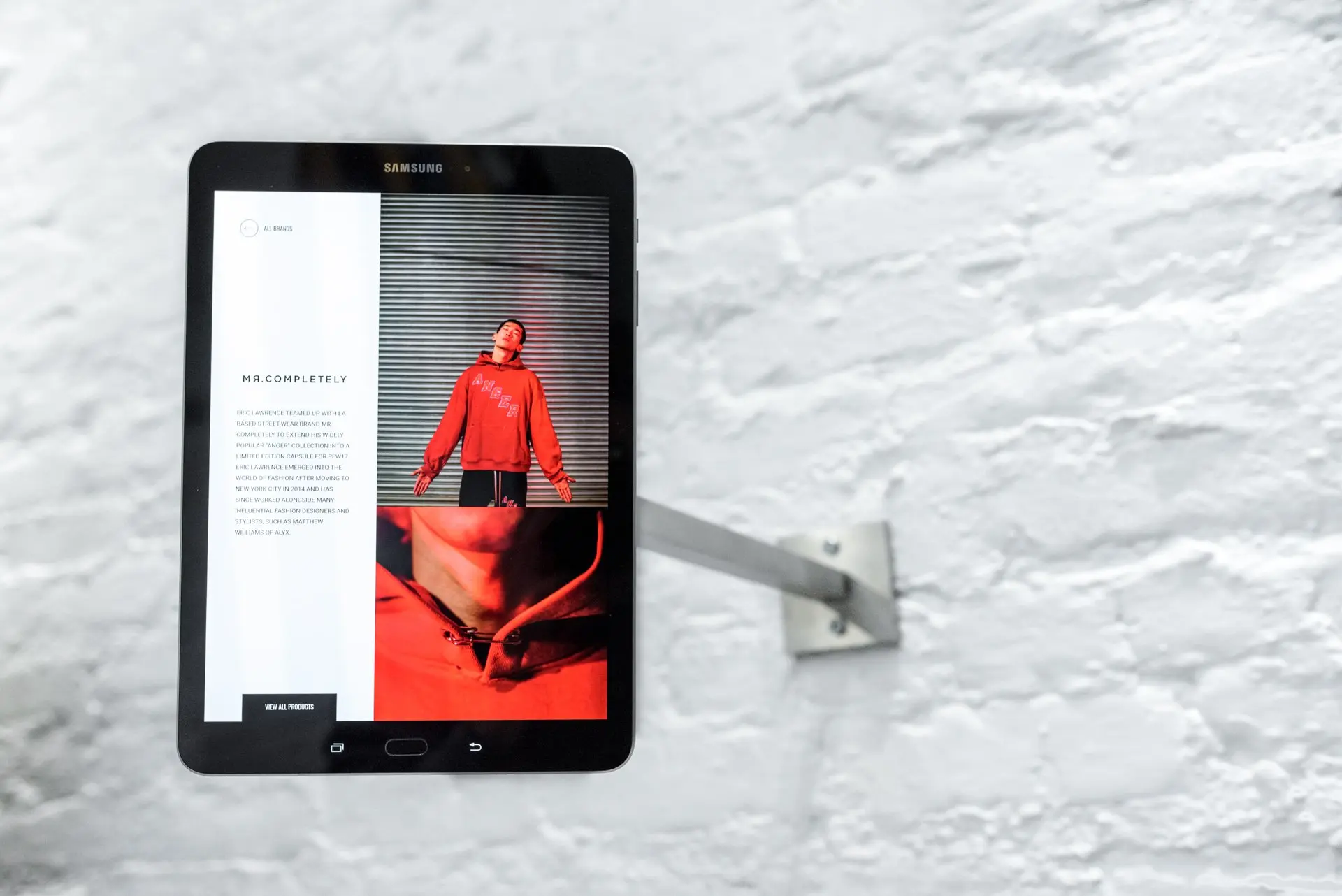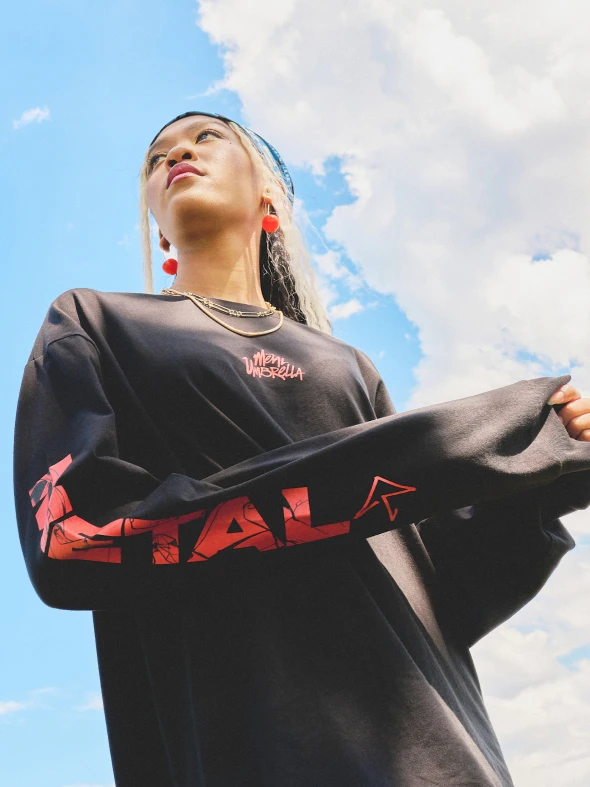Retail Technology For Fashion Brands

Quick Summary The face of commerce, and particularly retail, has changed dramatically over the past couple of decades.
The face of commerce, and particularly retail, has changed dramatically over the past couple of decades.
There are now online and mobile sales providing consumers with attractive conveniences like the ability to shop at home or on the go. While there’s been a lot of hubbub surrounding the growth of online shopping, to the detriment of brick-and-mortar stores, the truth is that fashion retailers can benefit in both arenas with the right approach.
Just look at fashion brand Fabletics, which started online and then expanded to include real-world locations following e-commerce success. What modern retailers need to consider is how to embrace the concept of creatingmultiple channels for a single brand, and more importantly, how to make the most of those channels. This is a concept commonly known as omnichannel retail.
Apparel brands, in particular, have a leg up because many customers still want to try before they buy. In fact, statistics show that68% of consumers in the U.S. prefer to make apparel purchases in-store. Fashion brands that want to ensure shoppers keep supporting retail locations can take steps to improve the in-store experience through technology.
One smart choice is to upgrade the in-store experience to mirror what consumers have come to expect with online shopping. Consider, for example, that online shoppers have access to a retail technology with product specs, features that allow for easy comparison between products, and quick access to pertinent information about available sizes and other options. With a fixed, in-store, digital platform like Reign, shoppers gain the same conveniences in the store as they get online, virtually solving the disconnect between modern and traditional shopping arenas.
Fashion brands that improve in-store shopping with appropriate retail technology can provide customers with the best of both worlds, giving them the same conveniences of online shopping, paired with the tactile shopping experience that can only be found in a real-world setting.
What types of technological upgrades are available and what do brands stand to gain by implementing technology in-store?
Self-Service Lanes

One of the biggest hassles of shopping in stores for many customers is having to wait in line to make purchases. When shopping online, all consumers have to do is hit the checkout button and proceed to make a purchase. In a brick-and-mortar store, there could be a long line leading to the register, especially if the store is understaffed.
This is an inconvenience that might lead some shoppers to abandon purchases. According to technology software company Synqera,73% of customers cite the checkout process as the greatest pain point of shopping in-store.
This is where digital POS systems likeself-service kiosks come into play, allowing customers to bypass the line and check themselves out. Although contactless pay options like cards and mobile/Bluetooth payment have been gaining popularity, not all consumers have access to them or trust them to be secure. Perhaps this is why fashion brands likeRebecca Minkoff have opted instead for a self-service checkout option that allows customers to make purchases on their own timetable with whatever form of payment is most convenient.
Interactive Fitting Rooms

Another potential shortcoming of in-store experience is the hassle of having to run in and out of the dressing room in search of additional sizes or products. The answer to this inconvenience isinteractive fitting rooms that allow shoppers to browse available sizes and product suggestions offered by interactive mirrors that recognize RFID tags on items shoppers bring into the fitting room.
This retail technology can not only help shoppers browse from the comfort of the fitting room, but also adjust the lighting, switch languages, or call for assistance or request another size instead of having to dash out and search for it. This helps to personalize the shopping experience while adding the convenience of browsing and selecting sizes and other features that shoppers enjoy online.
A good example of this is Uniqlo’s magic mirror, which offers a virtual dressing room feature. Shoppers that try on an outfit can use a touch panel to select different color options for the garments they’re wearing without having to take them off. They can also share images to social media to get instant feedback from followers.
Some fashion brands are also interested in experimenting with voice command technology, especially in the fitting room, where it could be used in a virtual assistant capacity. Customers familiar with using in-home voice technologies like Alexa and Google Assistant should have no trouble using fitting room voice attendants to order additional sizes, colors, or garments, which staffers can be alerted to grab and bring to the dressing room.
In-Store Apps

The use of technologies like tablets and kiosks in stores can help to make the in-store experience nearly as convenient as it is online. According to consumer surveys, approximately51% of shoppers are already using their mobile apps in-store to enhance the shopping experience. What if stores provided this retail technology to begin with so shoppers didn’t have to search for their own solutions?
Consider, for example, the Reign app. Shoppers can use it in-store to scroll through brands, collections, and products and find additional information that would be available online, but isn’t normally conveniently found in stores.
If shoppers are already turning to their mobile devices to find this information, why wouldn’t stores want to use an app like Reign to proactively show their understanding of customer wants and needs?
Rebecca Minkoff stores are also utilizing digital kiosks where shoppers can order drinks and call for assistance instead of having to search for sales staff. Then there are in-store applications that allow consumers to take advantage ofdiscounts and deals via mobile apps, increasing the appeal of making a purchase, or view peer reviews of products, decreasing the chance of returns.
Beacons are another option that may serve to bring in more customers. Mobile apps that enhance the in-store experience only work if customers actually come into stores. Beacons that connect to customers in proximity and offer personalized product selections for app users, or push alerts about discounts and deals, can increase traffic and sales in-store. Plus, drawing customers in with mobile technologies preps them to use in-store apps like Reign and shows that you are prepared to meet shopper expectations, improving the overall consumer experience and setting your brand apart from competitors.
At the very least, fashion brands should be utilizing clienteling apps that allow them to personalize the consumer experience, whether customers are shopping online or in-store. With information related to consumer profiles, wish lists, purchasing/return history, and more, businesses have the best opportunity to serve every customer’s specific needs. Personalization in serving customers is of the utmost concern in the push to merge online and in-store shopping experiences, and utilizing apps that optimize customer interactions is the basis for creating positive experiences, regardless of the setting.
Buy, Then Try

Fashion brands with brick-and-mortar stores have long relied on the “try before you buy” mentality to bring in shoppers. With the appeal of online shopping, however, there’s a new horse in the race – the “buy, then try” approach being floated by retail giants like Macy’s.
This avenue of omnichannel retail is referred to as BOPUS, for “buy online, pick up in store”, and it offers consumers the speed and convenience of shopping online without the potential for shoppers remorse when items show up weeks later and don’t fit right. Once customers complete purchases, they can go to their local store location at their convenience to pick up, or alternately, swap out sizes as needed to achieve the perfect fit. Plus, in-store employees have the option to “save the sale” by accessing inventory across locations to find suitable replacement items if the right size isn’t readily available at a customer’s local store.
On the other hand, some brands like Converse are upgrading the traditional “try before you buy” approach with apps that create a virtual fitting room on your phone or tablet. All shoppers have to do is point the camera at their foot to see what selected footwear will look like on them.
AI

We might not be to the point yet where Rosie the robot is chasing us around the house with a vacuum, making pithy comments about our life choices, but that doesn’t mean there isn’t real potential forartificial intelligence (AI) in business settings. In the retail sphere, AI can be deployed to solve a host of problems, from answering FAQs, to automatically ordering inventory, to analyzing consumer data in order to improve the shopping experience. Of course, there is still a level of human oversight needed if business owners want to make the most of available AI technologies.
Conclusion
For businesses interested in upgrading in-store experience to improve the customer experience, Avex Designs make the process easy with custom solutions like digital displays, tablet activations, touch-screen experiences, music curation, POS options, and more. Technology is the key to ensuring the best possible consumer experience these days, regardless of the type of commerce in question.
